Wisconsin Club Worth $5.1 Million
Fascinating history and an elaborate interior that would put the grandest riverboat to shame.
In December, with no advance notice, the 125-year-old University Club closed its downtown clubhouse. The University Club Country Club, in Brown Deer, acquired in a 2016 merger with Tripoli Country Club remains open. It had been hoped that members would enjoy both campuses, but that was not the case.
In 2011 the Wisconsin Club followed a similar strategy when it purchased the troubled 178-acre Brynwood Country Club for $3 million. Last June, that property, now The Wisconsin Country Club, was divested in a sale to Concert Wisconsin Country Club, LLC. for only $2.5 million. [Concert, of Lake Mary Florida, specializes in the recapitalization of golf courses and other clubs, and has over two dozen properties in the U.S.]
Taking a half-million-dollar loss hardly seems like a long-term strategy for recapitalization, at a time when club life of all kinds — city, country and even yacht! — is imperiled. The downtown Wisconsin Club still operates, but the club’s most recent IRS 990 submission, covering the period from November 2021 to October 2022, shows revenue of $7,521,706 and expenses of $8,401,786 for a net loss of $880,080. This shortfall may explain why the members voted to take a loss on the sale of the country club property.
A Clubhouse Since 1896
The Wisconsin Club has been housed since 1896 in a magnificent mansion at 900 W. Wisconsin Ave. Built in 1848 for Alexander Mitchell [1817-1887] a multiyear remodeling in the 1870s by Edward Townsend Mix [1831-1890] turned it into the most valuable home in the state. Around that time Mix designed the Mitchell Building, the Mackie Building, and numerous railroad structures for Mitchell. His client was the wealthiest Milwaukeean of the era, controlling his bank and the Milwaukee Road. Mix also designed Old Main at Soldier’s Home, erected with funds raised by Martha Reed Mitchell, Alexander’s wife.
Mitchell’s portrait hangs in the Milwaukee Club, presenting a visage that brings to mind a bank president confronting a junior clerk who forgot to shut the safe at closing time.
Following her husband’s death, Martha Mitchell resided in her summer home on the St. Lawrence River and her winter villa in Jacksonville, where she died at 83 in 1902.
In 1895, members of the Deutscher Club, organized in the spring of 1891, were in search of a new home after their quarters burned in a fire. The Mitchell Mansion was available, and the members met the $100,000 asking price by raising funds and taking out a mortgage. In 1896 it opened its doors here. They have been open ever since. As one might gather, most of the Deutschers came from Germany. Their club was set up to mimic those established by the WASPs of a previous generation, in a pattern familiar to ethnic groups who were asserting their growing financial and social status in the new country in its Gilded Age.
However, in 1918, as the United States went to war with their homeland, the club’s name was in public disfavor. According to an account by the Milwaukee County Historical Society:
In 1918 the name was changed to the Wisconsin Club due to the strong anti-German feelings that manifested themselves during World War I.
Around the same time the Germania Building became the Brumder Building (still a German name, though less obvious), Sauerkraut became Liberty Cabbage, while German pretzels disappeared from the menu entirely.
What’s It Worth?
Mitchell’s original 1848 house remains as the core of the much-expanded clubhouse, which now comprises 49,828 square feet of finished building area. The structure is valued at $400,000. It sits on a 118,250-square-foot lot, occupying an entire city block. The giant parcel was assembled over the years as Mitchell bought out his neighbors and expanded his gardens and greenhouses.
The land is assessed at $4,730,000, or $40 per square foot. The total assessed valuation is $5,130,000 and generated $121,221.90 in property tax revenue for 2023.
Who was George Smith?
George Smith never lived in Milwaukee: He merely owned it.
The Wisconsin Club sits on Block 179 of George Smith’s Addition. George Smith [1808-1899], a banker, was Mitchell’s cousin and mentor. Smith was born in Aberdeenshire Scotland. In 1833, at 26, Smith boarded ship for America, landing briefly in New York City, where he presented his letters of introduction to prominent figures in the banking community. He did not remain long but headed to Buffalo, sailing from there to Detroit and thence overland on the new Detroit-Chicago Post Road, arriving in early 1834 in the infant Windy City. He used his limited capital to buy city lots in Chicago and “in the wild lands where Milwaukee now stands,” as a Mitchell eulogist put it in 1887. When prices jumped in 1835-36, Smith sold many lots at a great profit, packed his bags and returned to his homeland, where he recruited his younger cousin Mitchell and two others to join his Chicago-based enterprise in the New World.
The Belvedere
During its time as the Mitchell residence, the home was flanked with gardens, greenhouses and a conservatory. In 1871 an Italian woodcarver constructed a belvedere (enclosed gazebo) in the southeast corner of the property. A club history states it has been called “a ‘teahouse,’ a ‘Kermesse,’ a ‘Chinese Cottage,’ and, in a deep, authoritative voice, ‘a Typical Black Forest Pavillion.’ The remarkable structure remains today.
Mix greatly expanded the residence, and craftsmen made an elaborate interior that would put the grandest riverboat to shame. It, too, remains in splendid condition.
According to a club history found in the Assessor’s files:
The grand staircase in the East Hall of the House with its twenty-four carved lions’ heads took one craftsman seven years to build.
The Club Today
In 2009 the Business Journal reported that the Wisconsin Club was seeing “growth where others decline,” citing an increase in membership from 400 in 2002 to 1,200 in 2009. Management cited $15 million in improvements, “with no assessment.” In 2014, revenue was $10 million.
The 2022 figure, prior to the sale of the golf course, was $7.5 million. The bottom line was bolstered by $750,962 in “income from public use of club facilities” — that’s ten percent of all revenue.
One such event was held on Saturday, Feb. 10, when the ballroom was the venue for the 36th Annual Bal Maskowy, presented by the Syrena Polish Folk Dance Ensemble of Milwaukee. It was entitled, “A Night on Jones Island,” a tribute to the Kaszubes who settled there. It is unlikely the Deutscher Club ever hosted a similar event. Times change.
The Rundown:
- Name of Property: The Wisconsin Club
- Address: 900 W. Wisconsin Ave., City of Milwaukee
- Assessed Valuation: The 118,250-square-foot lot is assessed at $4,730,000 ($40.00/s.f.), and the improvements are valued at $460,000 for a total assessed valuation of $5,130,000.
- Taxes: 2023 Estimated $121,221.90
- Owner: Wisconsin City Club Holdings, LLC. Established 12/29/2011. Omar Naimi, Registered Agent
- Type: Special Mercantile with Sport, Health & Recreational Properties
- Architect: Core of building dates to 1848. Edward Townsend Mix remodeled mansion in 1872-77. Many other changes over the years; 1906, 1937 additions
- Style: Second Empire
- Neighborhood: According to City Map: Kilbourn Town; also known as Westown
- Subdivision: George Smith’s Addition
- Aldermanic District: 4th; Robert Bauman
- Walk Score: 91 out of 100 “Walker’s Paradise” MKE average: 62
- Transit Score: 64 out of 100 “Good Transit” MKE average: 49
- Bike Score: 82 out of 100 “Very Bikeable” MKE average: 58
How Milwaukee is it? It is a mere 0.9 miles due west of City Hall
Photo Gallery
If you think stories like this are important, become a member of Urban Milwaukee and help support real, independent journalism. Plus you get some cool added benefits.
What's It Worth?
-
Milwaukee Yacht Club Worth $2.28 Million
 Mar 27th, 2024 by Michael Horne
Mar 27th, 2024 by Michael Horne
-
Woman’s Club of Wisconsin Is Nation’s Oldest
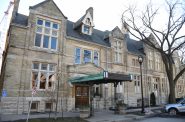 Jan 29th, 2024 by Michael Horne
Jan 29th, 2024 by Michael Horne
-
University Club Milwaukee, $2,728,500
 Dec 25th, 2023 by Michael Horne
Dec 25th, 2023 by Michael Horne


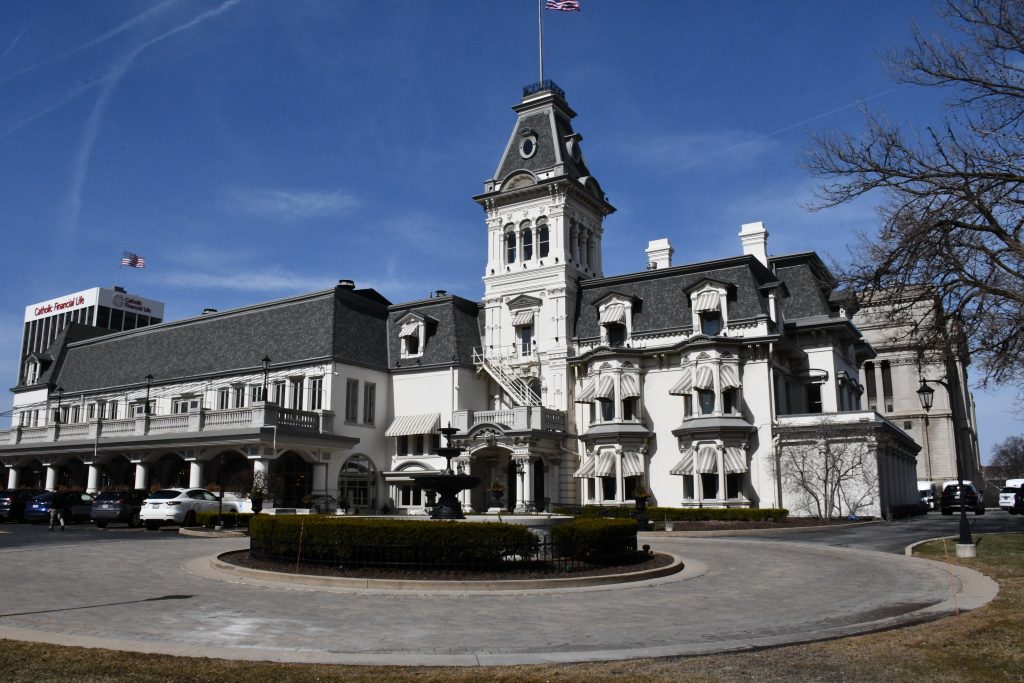
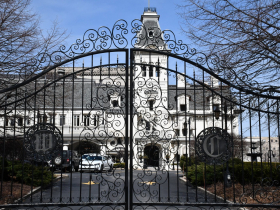
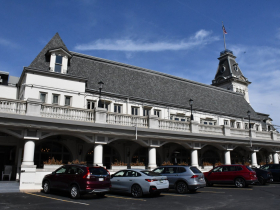
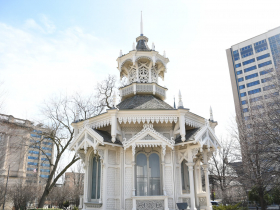
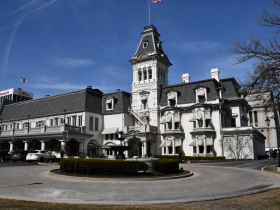
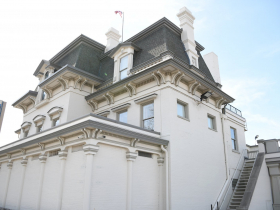
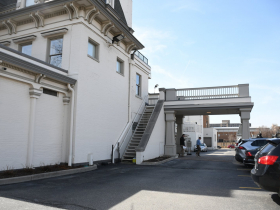















Michael, What are the iniation fee and annual dues?
Thank you for a very entertaining & informative article.
Re: “The Woman’s Club”: Why does the name use the singular possessive rather than “The Women’s Club”? Antiquarian grammar?
How is that building only valued at $400,000? It’s almost 50,000 square feet of finished space and in great condition. Who at the club got the city assessor to forget a zero on the building value?